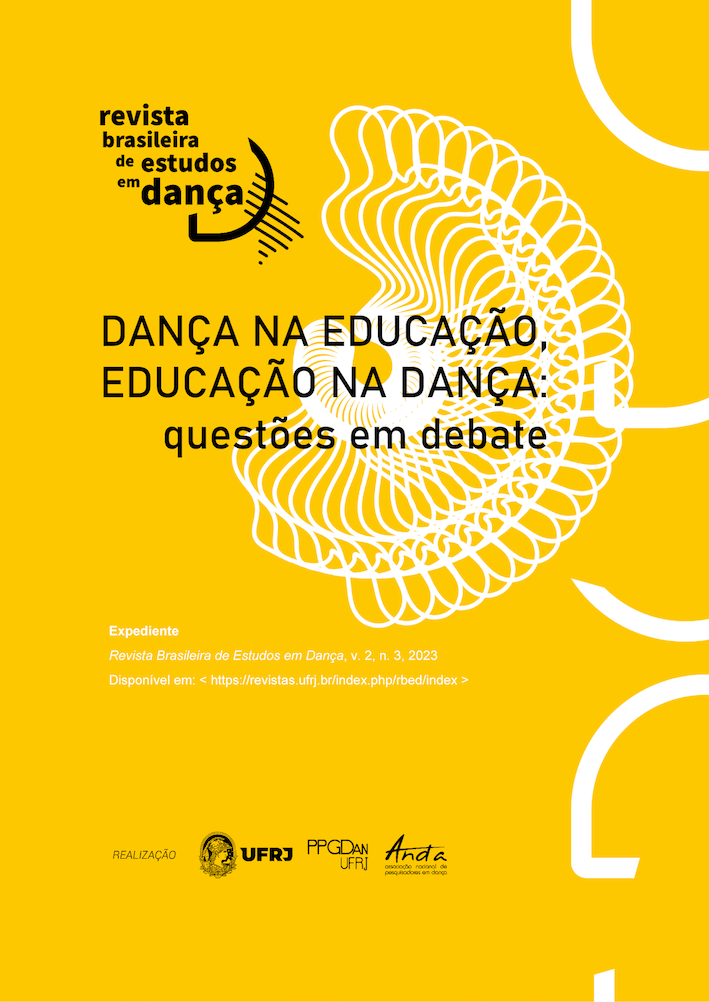Clues for dance compositions in education
DOI:
https://doi.org/10.58786/rbed.2023.v1.n3.58737Keywords:
dance, Education, clues, school.Abstract
Dance is an aesthetic practice, and, as such, it needs to be felt, much more than understood. By considering this premise and the danger of content and technical teaching approaches, which focus on what dance is, to the detriment of what this practice can become and change itself, this article aims to expose the inappropriateness of rules and universal principles of action, as the subject is dance in education. That is due to the affirmation of moving intentions and directions that only come together in action, within school educational relationships. Therefore, the question is: how to sensitize educators to these intentions and moving directions in the work involving school dance? Based on this question, some clues are presented, understanding them as ludic and groping guidelines that invite us to operate, always and every time, a methodological inversion for the teaching of dance in education.
Downloads
Published
Versions
- 2024-05-09 (3)
- 2023-12-01 (2)
- 2023-09-02 (1)
How to Cite
Issue
Section
License
Authors who publish in the Revista Brasileira de Estudos em Dança are
responsible for the content of signed articles and retain copyright.
They grant the journal the right of first publication with the work simultaneously
licensed under the Creative Commons Attribution-NonCommercial 4.0 License
(Open Archives Initiative - OAI). This feature, used for open-access journals,
allows sharing work for non-commercial purposes and acknowledges
authorship. If the text is later published in another vehicle, the author
must inform that it was initially published as an article in the Revista Brasileira
de Estudos em Dança. Therefore, even if the journal owns the first publication,
authors are entitled to publish their work in institutional repositories or on
their personal pages, even if the editorial process has not been completed.
The journal reserves the right to make normative, orthographic, and grammatical changes to maintain the language standard, respecting the authorial style.

